"Schilling Chronicle" as a historical source
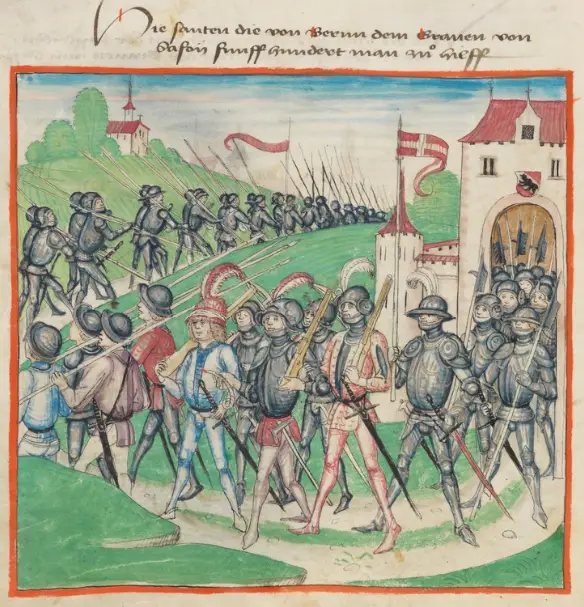
Bern's army sets out on a campaign. Notice how well armed the Bernese are in general. Most of them have armor, all have helmets. Main weapons are long pikes, halberds and one-and-a-half-handed swords. The foreground shows shooters with crossbows and firearms, with one shooter holding a lit fuse in his hand. Interestingly, only the standard bearer with the flag and the riflemen have feathered headdresses! Diebold Schilling "Official Chronicle of Bern", Bern, 1478–1483. Bern City Library
what he did and said
recorded in stories Prophet Iddo."
Second Chronicles 13:22
Documents of history. On the pages of VO we have already told our readers more than once about various historical documents containing valuable information on the history of different countries and peoples. Today we will go down to a lower level and get acquainted with the chronicle of just one city - Swiss Bern, and we will take the “Chronicle of Schilling” as an illustrated source.
First of all, let’s find out what kind of document this is.
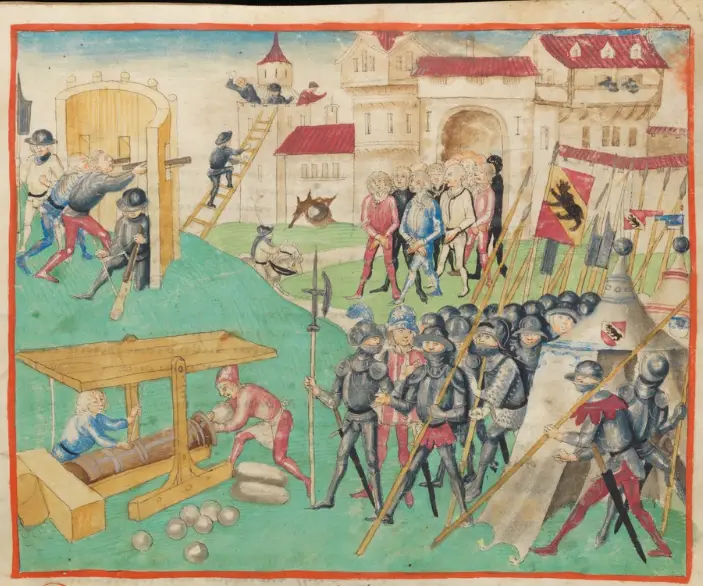
Siege of the city. There is a bombard with a movable cover, and stone cannonballs and caps with gunpowder (!). Shooters from rifles and crossbows fire at the city from behind the shield cover. And the residents, having received a huge cannonball into the wall... surrender!
And it so happened that the Amtliche Berner Chronik (“Official Chronicle of Bern”) was commissioned by the city of Bern to Diebold Schilling* (1445–1486) in 1474. About ten years later he was able to present to the city council a three-volume work with colored title pages, decorative initials, and more than six hundred large illustrations. Moreover, in his chronicles he also included excerpts from original documents and even folk songs, which makes them extremely valuable sources for modern researchers today.
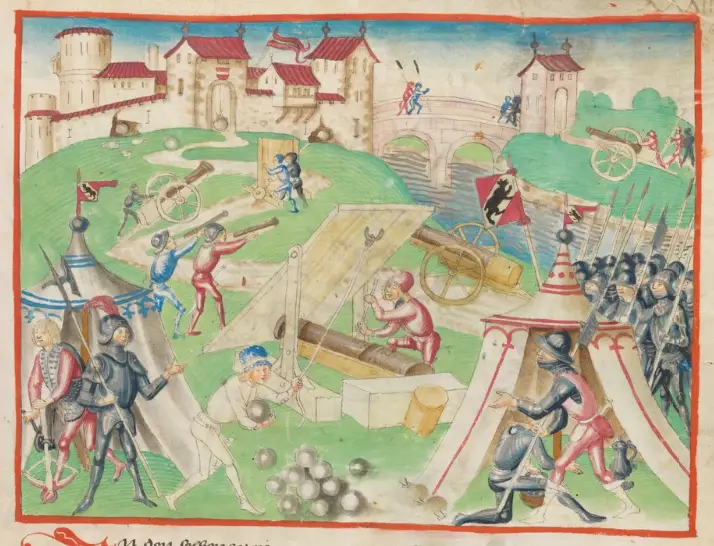
Various types of weapons used by the Bernese...
It covered the period from 1152 to 1480 and was based on the older chronicle of Conrad Justinger according to the version of Bendicht Chahtlan. The work remained in the possession of the Bern Chancellery for almost three hundred years before, in 1762, all volumes were transferred to the city library of Bern, where it remains today.
Well, today we will briefly get acquainted with the history of this city, but mainly we will look at the amazing quality illustrations from this chronicle and see what knowledge from the field of military history of the late Middle Ages we can extract from them.
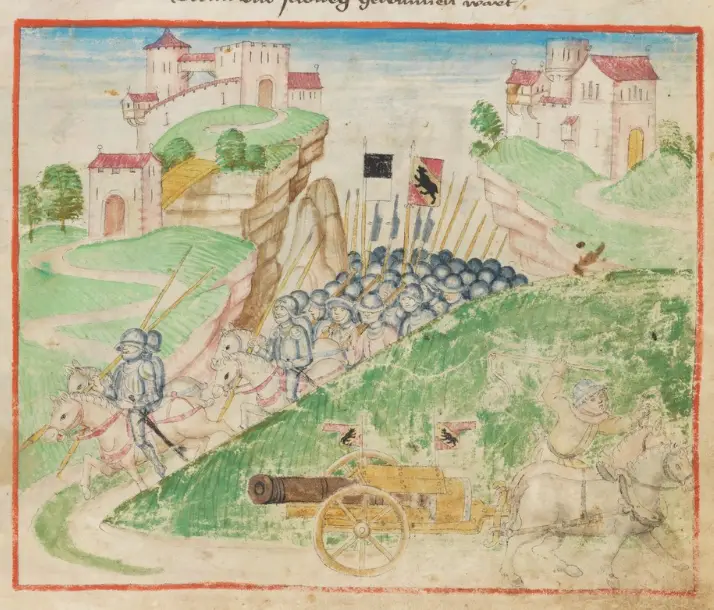
And again the Bernese, together with their allies, set out on a campaign. The foreground shows a gun with a roof over the breech and flags depicting a bear
Let's start with the fact that although settlements on the site of Bern are known from the Neolithic era and the La Tene period, the city itself was founded in 1191. The city was created by Berchtold V, Duke of Zähringen, who allegedly vowed to name it after the first animal he encountered while hunting. It turned out to be a bear, so the city was named after him, and he received the corresponding coat of arms, although experts have great doubts about the veracity of this legend.
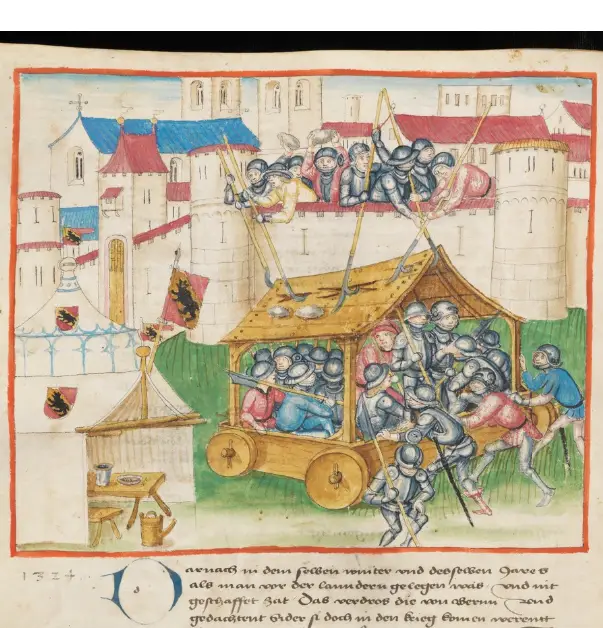
It's the 14th century, but... covers from the times of Ancient Rome, as you can see, were still in use!
It is interesting that on some pages the years are indicated below the illustrations - in this case 1324.
But here’s what’s curious: Schilling wrote his chronicle more than a hundred years later, and if so, the question arises - to what time do his illustrations date back? By the indicated year or still by the time of writing?
Judging by the images of handguns, which did not yet exist in 1324, the drawings in his chronicle date back to the time of writing, that is, to the end of the XNUMXth century...
The city was lucky in that Duke Borchtold died childless, with the result that Bern became an imperial free city already in 1218. In any case, what is important is that by the end of the XNUMXth century Bern was de facto a completely independent city-state within the Holy Roman Empire.
In 1323, the citizens of Bern entered into an alliance with the Forest cantons of Uri, Schwyz and Unterwalden, which did not please the neighboring city of Fribourg and the Burgundian feudal lords. In 1339, in alliance with Friborg, they recruited an army of 17 men and 000 mounted men-at-arms under the command of Rudolf von Nidau and Gerard de Valengen and moved these forces to Berne.
The city asked for help from its allies in the Swiss Confederation, but managed to gather only 6 people from Bern, Uri, Schwyz, Unterwalden and a few other cities.
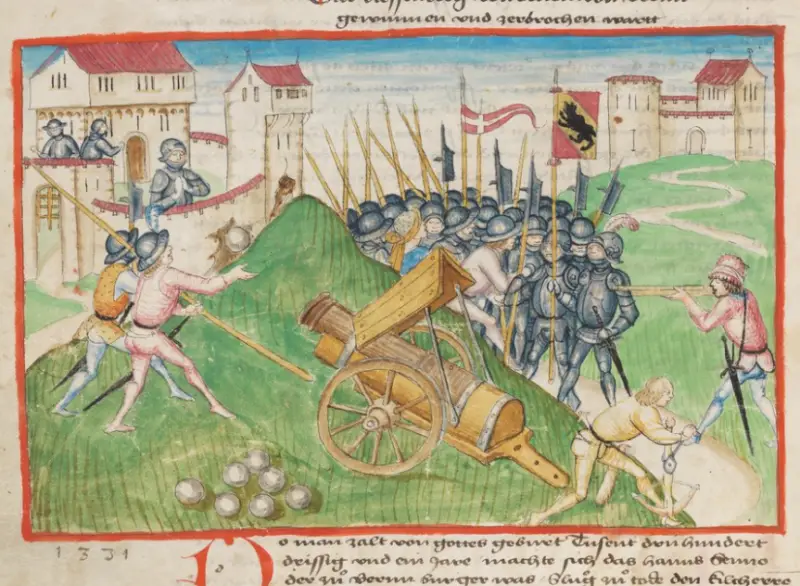
It turns out that the roof of the “house” above the breech of the gun rose and served as a gun shield. That's how long ago they appeared!
When the army of Friborg laid siege to the Bernese border town of Laupen, the combined army of the Swiss cantons moved towards the city in order to lift the siege. Although the Bernese troops were outnumbered by the enemy, they were well armed and motivated, which the enemy infantry could not boast of. In the decisive battle at the walls of Laupin, the army of Friborg was defeated, which strengthened the position of Bern and their relations with the Forest cantons.
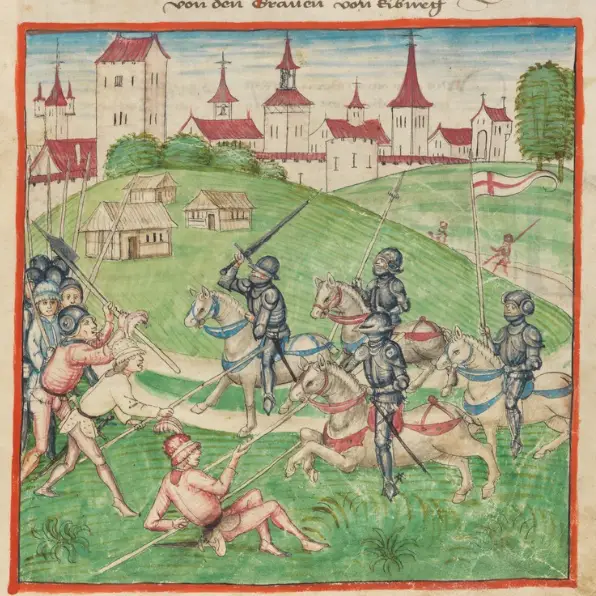
Swiss infantry repels the attack of mounted men-at-arms with spears and halberds
Already in 1353, he became a full member of the Old Swiss Confederation, after which throughout the 1536th century the city was only engaged in expanding its sphere of influence, conquering and annexing more and more new territories. As a result, in XNUMX Bern became the most powerful Protestant city-republic north of the Alps, and later the capital of Switzerland.
But here we see that the horsemen of the opposing side fled as soon as they saw the approaching Swiss!
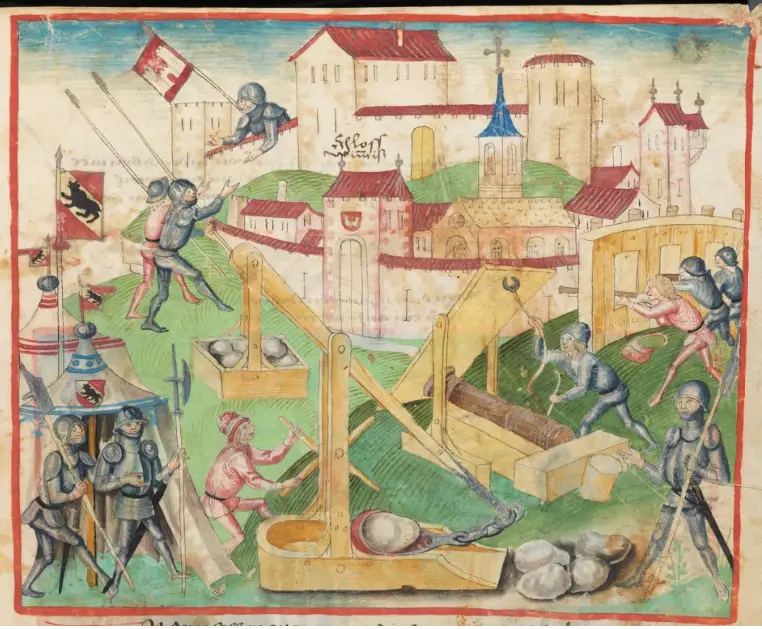
Siege of the city. Along with bombards, trebuchets are also used...
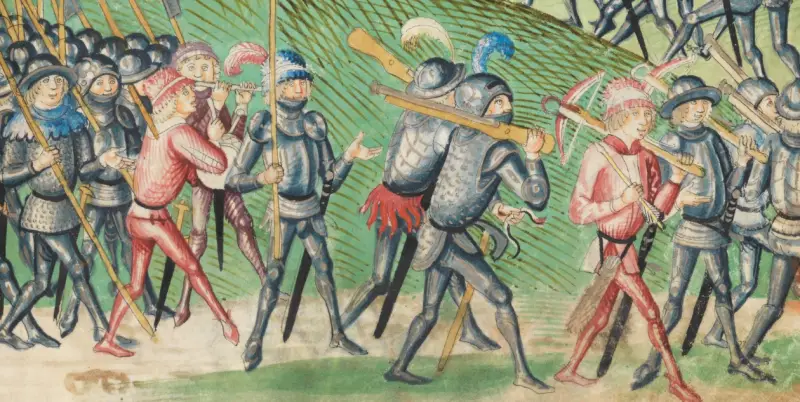
This fragment of a miniature from Schilling's chronicle shows the Swiss going on a campaign in close-up. Interestingly, the shooters are armed not only with their firearms, but also with axes (at least one shooter). Moreover, almost all the warriors are dressed in full knightly armor, although clearly lightweight helmets of the “pamel de fer” type. Salad on the head of only one shooter in the center. One of the crossbowmen, as well as both flute players, do not have armor, although the second crossbowman, again, is dressed in full armor and an “iron hat”
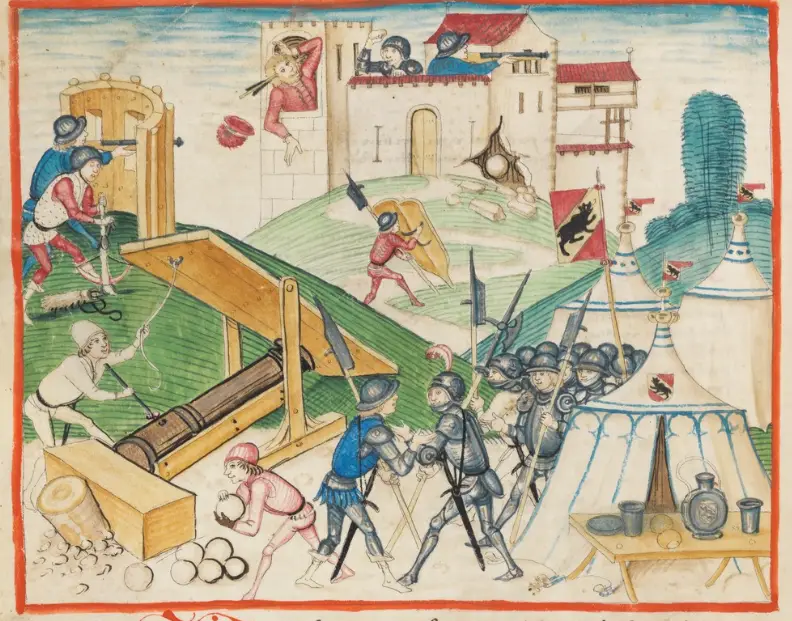
Another siege scene. A powerful bombard rests against a massive wooden beam, which in turn rests against a thick log buried in the ground. Firearms shooters, again, fire from behind wooden cover. The crossbowman cocks the crossbow bow using a “Nuremberg crank”, that is, by the time the chronicle was written, this mechanism was already known and widespread. The consequences of a stone ball hitting the wall are clearly visible. The wall itself has not been broken through, but is so destroyed that one or two more hits like this and it will collapse
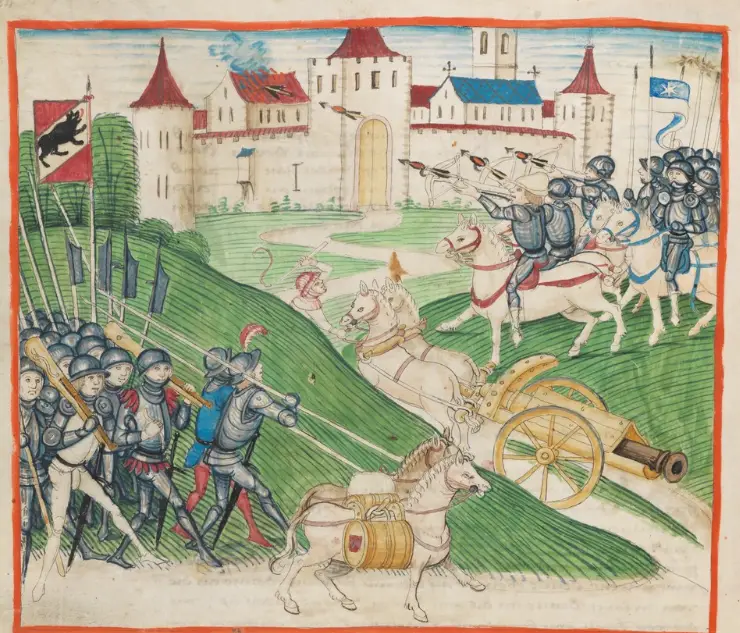
A very interesting miniature. On it, in addition to depicting Swiss infantry with pikes, halberds, and firearms, we also see mounted crossbowmen shooting lighted arrows at the city. Moreover, the arrows are equipped with special charges with a flammable substance!
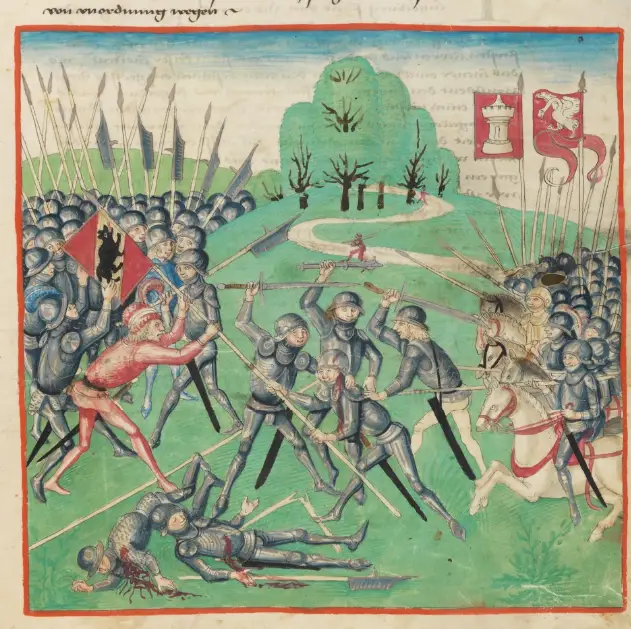
"Fight for the Banner." Interestingly, in the hand of the opponent of the Bernese one can see a characteristic two-handed Swiss saber, known as a schnepfer. It acquired its distinctive slight curve only at the beginning of the 16th century, so this is another proof that, although the miniatures depict events of the 14th century, the artist who painted them conveyed in them what he saw a little later, namely already in the end of the 15th century!
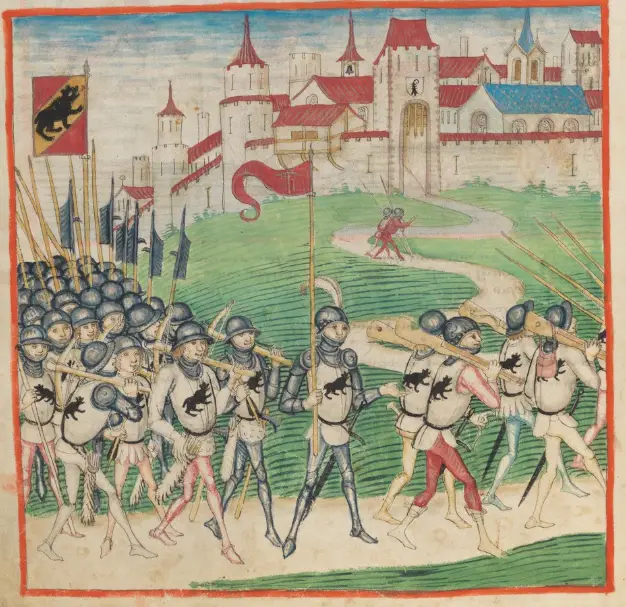
And again the Bernese army sets out on a campaign. Moreover, all the warriors, both men-at-arms with spears and halberds, and riflemen, are dressed in some kind of uniform - armored caftans with an embroidered image of a bear on the chest and on the back. It’s interesting that such attire in images of that time is very rare! And even among the drawings on the miniatures in the same chronicle!
Thus, Schilling's Berne Chronicle gives us a comprehensive picture of how the soldiers of the Swiss city of Bern and the Swiss in general were dressed, armed and fought in the last decades of the 15th century.
* In addition to this work, he also compiled the “Great Burgundian Chronicle” (another name for the “Zurich Schilling”), written by him in 1484, and he is also the author of the “Spitz Schilling”, which dates back to the 1480s. That is, Diebold Schilling was an exceptionally fruitful chronicler.
Information